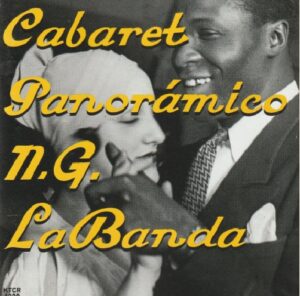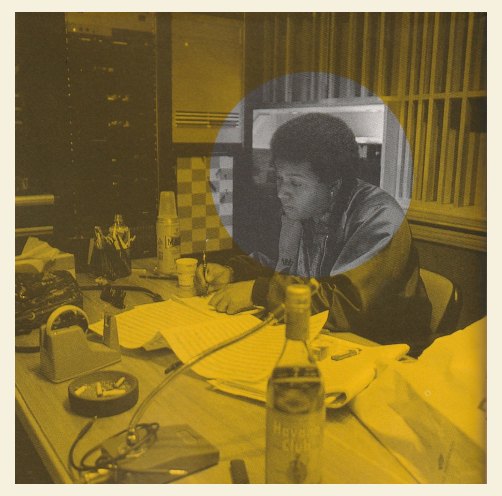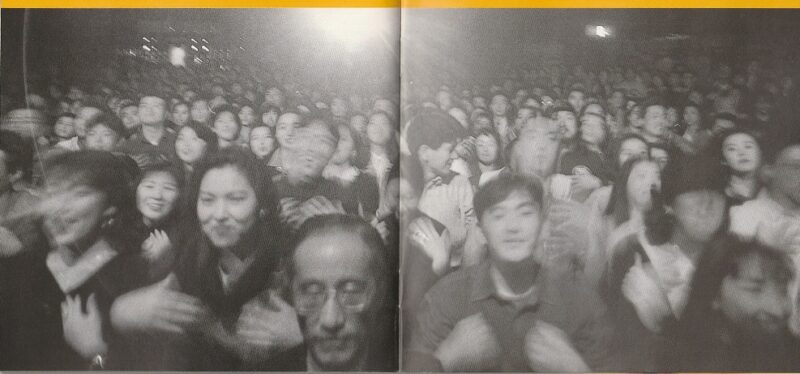
Cabaret Panorámico (Échale Limón)
NG La Banda
1993
1. CONGA NEGRO CANSA”O”
2. MURAKAMI MAMBO
3. CLUB 4 CHA-CHA-CHA
4. DANZON RIO SUMIDA
5.SANTA PALABRA
6. BOLERO ADVERTIDO
7. COMO PANTERA
8. EL TRAGICO
9. ECHALE LIMON
Autor y Arreglista: José Luis Cortés
From liner notes
NG La Banda’s concert in Japan was a huge success.
NG is a great band after all, and they did what I expected them to do.
“I first played the violin at the Conservatorium (music school), but it didn’t work out at all and I was always crying. It must have been really painful because I was crying. One day, my wind instrument professor told me that my lips were suited for the flute. So I started playing the flute. ”
“After the revolution, many classical musicians from the former Eastern Europe came to Cuba and began teaching classical music of a very high standard to a select group of young people. Of course, all schools do not require tuition fees. I enjoyed the process of improving my instrument, but I was also frustrated because I could only play classical music.”
“As you know well, the tradition of Cuban music is extremely rich. There are all kinds of rhythms, and the songs are really beautiful. But we were forbidden to play Cuban music.
Thinking about it now, I may have been right. Because I was thoroughly exposed to classical music, I, as well as the other NG members, were able to acquire extremely advanced techniques. ”
“A funny thing happened. People always say that Cuban music is fun. Because it’s fun to play music, right? We can’t play music in a sad mood. , my professor told me, “Play it with sadness.” I couldn’t do that, because no matter how sad a song is, it’s fun to play.”
“Still, one day, I really wanted to play Cuban music. So I started playing Cuban music with my friends, unbeknownst to my professor. When that was discovered, I was banned from going out on holidays. Because classical music isn’t our music.
It is natural for everyone to want to make their own music someday, isn’t it? ”
“I participated in the founding of Los Van Van and then joined Irakere.I was scheduled to go to the Czech Republic to study music, but it was canceled because of my bad behavior. I guess it wasn’t a good idea to perform Cuban music without the professor’s attention. Although Los Van Van and Irakere are different types, they were both top bands representing Cuba. However, in the mid-1980s, I formed a session band with my old friends from music school and started playing jazz. That’s the origin of NG La Banda. ”

The band members that José Luis assembled were truly amazing.
“You were surprised at the recording as well as the concert, weren’t you? I think the only people who could record such an ensembled song in such a short time were the old Afro-Cubans or Irakere at its peak. Mexico, the U.S.A., Puerto Rico, etc it would take a month, even a year.”
NG La Banda finished recording a total of nine songs, including six new songs, in two days. Including the mixdown, we made one CD in four days.
“NG’s drums, synths, piano, bass, and alto saxophones are all people who would be leaders and have their own bands in other countries.But in Cuba, it’s more convenient to be in a supergroup, so we’ve gathered in NG for now. That’s why you can do things like that. ”
“Jazz influenced me a lot. I have performed at jazz festivals in many countries. The way I studied jazz was that one person would record the radio coming in from Miami, and then everyone would listen to and copy it. But that’s not to say jazz is everything.”
“I once saw a video of a Miles Davis concert, and during one of his solo parts, Miles turned his back to the audience and played the trumpet. I couldn’t believe it. Who was he playing for? It’s for everyone. It is not playing it for myself.”
“We don’t want to play jazz. We use jazz as an item. What we want to do is fusion. We’d like them to call us a jazz fusion band, not salsa.”
What Jose Luis is talking about is the original meaning of “FUSION.”
“Classical music may be the only thing that we really respect in the sense that we can’t surpass that.”
I was with Jose Luis almost all the time, but we didn’t talk much about anything other than music.
He was an undeniable “musician” and had no interest in anything else. Once the recording was finished, a long, boring trackdown began. As the wait time was unusually long, I was able to gradually ask him about his private life and various things about Cuba.
We’ve talked about women.
It’s a big lie that bad wives give birth to art and science.
By the way, in Japan, a lot of jealous women will strangle their girlfriends while they’re sleeping, but in Cuba, some cut off their dicks or pour gasoline on them and try to set them on fire.
There is a great rumba singer who once had her penis cut off. She was in prison for four years, but now she has come back and is singing the rumba. Even though she was cut, she seems to be doing well walking around town.
If it were Japan, this would have been talked about for decades as a bizarre incident. This is the difference between Japan and Cuba.
NG’s bassist, Feliciano Arango, is a super energetic guy who makes you realize that this is what energy is all about.
I have never met a person with so much energy. Not only is he energetic, but he’s also smart. He has the face and body of a middleweight boxer rather than a bassist. He plays great, eats well, drinks well, makes those around him laugh, and laughs himself.
When I once asked him, “Why are you so energetic?” he answered, “Because I’m human.”
Great answer.
I’ll never forget that answer.
Ryu Murakami
Reprinted from The Best Magazine (published by KK Bestsellers)
José Luis Cortés (Voz/ Flaute)
Tony Calá (Voz)
Mariano Enrique Mena (Voz)
José Miguel Crego (Trompeta)
Elpidio Chappottin (Trompeta)
Germán Velazco (Saxófono Alto)
Roland Pérez Pérez (Saxófono Tenor)
Miguel Angel de Armas (Teclado)
Rodolfo Argudin (Piano)
Feliciano Arango (Bajo)
Calixto Oviedo (Bateria/ Coro)
Juan Nogueras (Tumbadora)
Pablo Cortés (Bongo)
Guillermo Amores (Güiro)

Dirección General y Producción Musical : José Luis Cortés
Grabación y Mezcla : Tatsuya Morokaji
Asistente de Grabacion: Atsushi Hattori
Grabado en Keystone Studios, Tokyo
A & R : Ryoichi Takahashi
Foto de la Carátula: Brassaï
C Gilberte Brassal/ Todos Los Derechos Reservados/ PPS
La foto fue escogida por Ryu Murakami
Dirección Gráfica: Hiroaki Nagai
Diseño: Makoto Yamamoto
Coordinación Gráfica: Kazuko Sanbo
Fotos: Gen Yamamoto y Atsushi Kondo
Traducción de texto de canciones: Yvonne Moreira y Haruhiko Kono
Agradecemos a Haruhiko Kono, Yukiko Yoshino, Ikuo Nabeta, Michlyo Kimura, Carmen Mayans, Juan Carlos Amador, ARTEX y Fuji Pacific Music
Producer General : Ryu Murakami